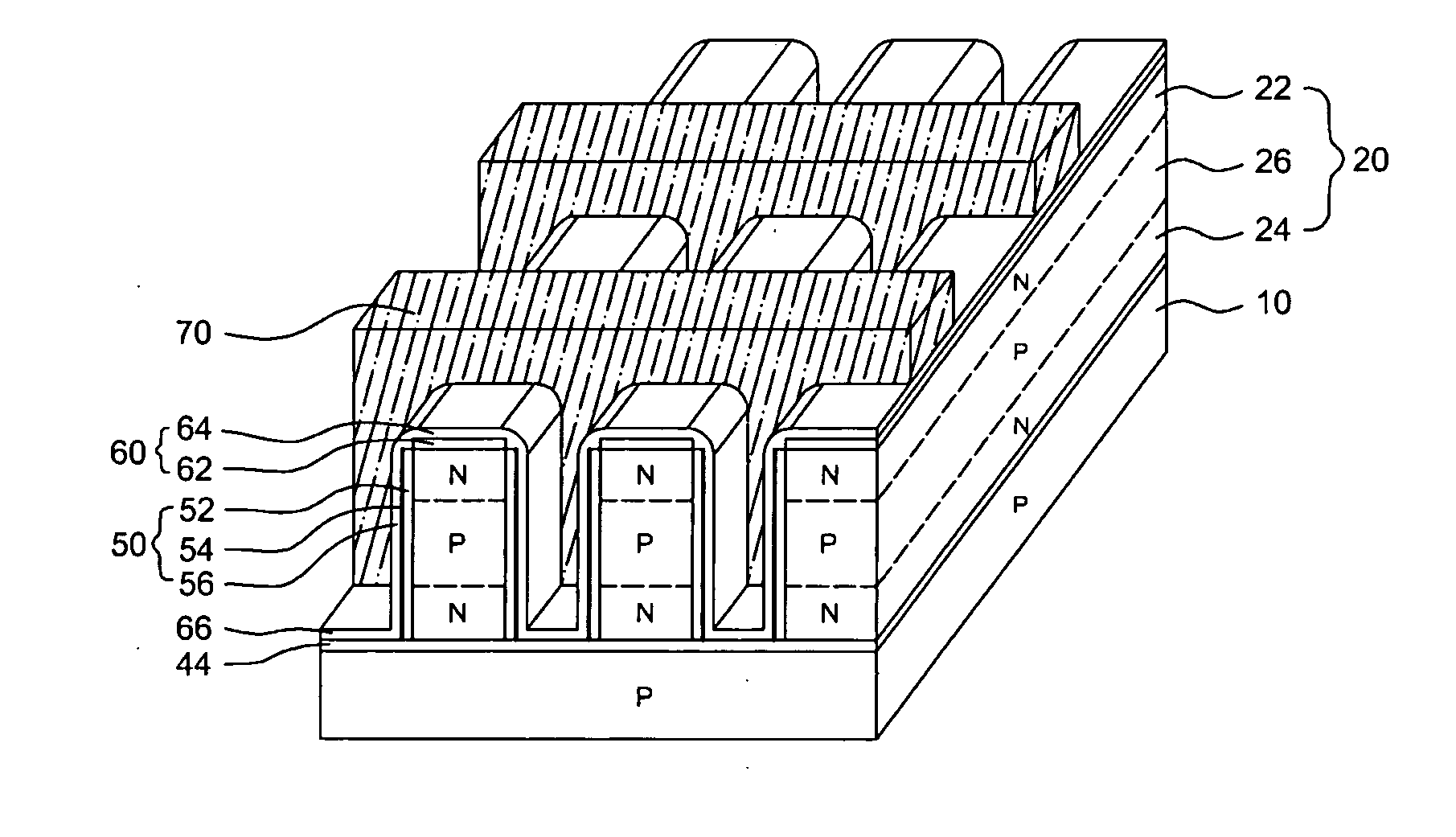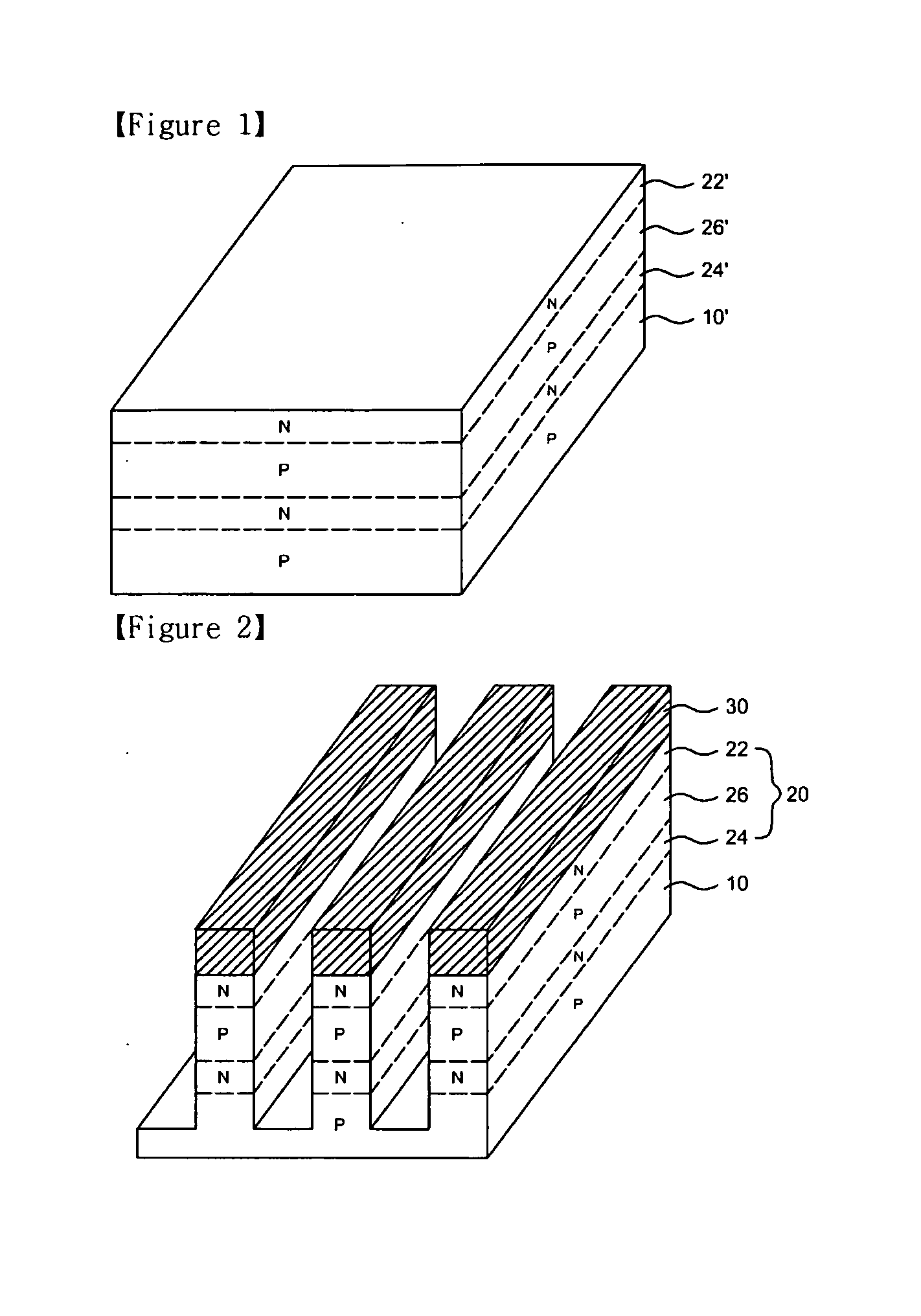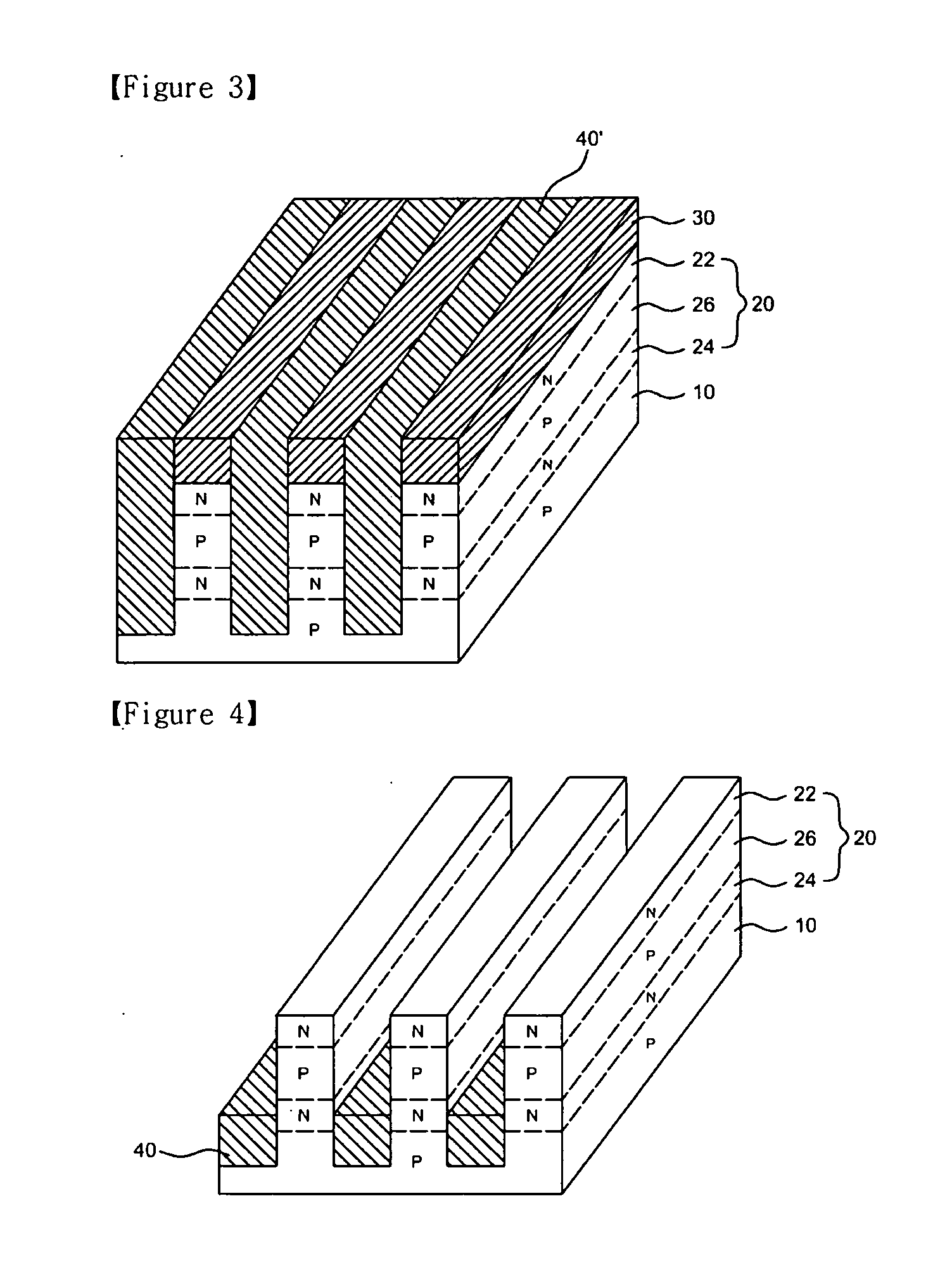Memory cell device having vertical channel and double gate structure
a memory cell and gate structure technology, applied in semiconductor devices, instruments, electrical devices, etc., can solve the problems of high integration, high integration difficulty, and retained limitations, and achieve high integration, high integration, and increase the amount of reading current.
- Summary
- Abstract
- Description
- Claims
- Application Information
AI Technical Summary
Benefits of technology
Problems solved by technology
Method used
Image
Examples
first embodiment
[First Embodiment]
[0031]In the basic structure, a field region 40 is formed with an oxide layer filling a space with a predetermined thickness between neighboring pillar active regions under one side of the second semiconductor layer 24, as shown in FIG. 6.
[0032]FIGS. 1 to 6 show the fabricating process according to the first embodiment of the present invention.
[0033]First of all, as shown in FIG. 1, an N-type doping layer 24′ is formed uniformly in the deep site by injecting N-type impurities with proper dose and energy to a P-type semiconductor substrate 10′ to form a second semiconductor layer 24. Then, the same N-type doping layer 22′ is formed uniformly in the shallow site by injecting the same N-type impurities with the same dose but smaller energy to a P-type semiconductor substrate 10′ to form a first semiconductor layer 22. It is more preferable to form a P-type doping layer 26′ for forming a third semiconductor layer 26 by injecting P-type impurities with proper dose and e...
second embodiment
[Second Embodiment]
[0039]A memory cell of the present invention can be embodied by using a SOI substrate, as shown in FIG. 11. In the basic structure, the pillar active region 20 is formed with a silicon layer of a SOI substrate and the field region is a buried oxide layer 42 of a SOI substrate.
[0040]FIGS. 7 to 11 show the fabricating process according to the second embodiment of the present invention.
[0041]The fabricating process for the second embodiment is almost the same as the fabricating process for the first embodiment. Differences between the two fabricating processes are following:
[0042]First, as shown in FIG. 7, NPN doping layers 22′, 24′ and 26′ are formed orderly in the silicon layer of a SOI substrate.
[0043]Then, as shown in FIG. 8, a pillar active region 20 with a predetermined height is formed by using a nitride layer or other material mask 30 and etching silicon. The etching silicon should be done to reveal the buried oxide layer 42. Unlike the first embodiment, ther...
third embodiment
[Third Embodiment]
[0046]A memory cell of the present invention, as shown in FIG. 17, in the basic structure, a field region is formed with a oxide layer 44 formed by an oxidative encroachment on a bulk silicon substrate 10 under the second semiconductor layer 24.
[0047]FIGS. 12 to 17 show the fabricating process according to the third embodiment of the present invention.
[0048]The fabricating process for the third embodiment is almost the same as the fabricating process for the first embodiment. Differences between the two fabricating processes are following:
[0049]First, as shown in FIG. 12, NPN doping layers 22′, 24′ and 26′ are formed orderly onto a P-type bulk substrate. It is preferable for the N-type doping layer 24′ for the second semiconductor layer 24 to be formed slightly thicker than the N-type doping layer 24′ in the first embodiment.
[0050]Then, as shown in FIG. 13, a pillar active region 20 with a predetermined height is formed by forming a nitride layer mask 30 and etchin...
PUM
 Login to View More
Login to View More Abstract
Description
Claims
Application Information
 Login to View More
Login to View More - R&D
- Intellectual Property
- Life Sciences
- Materials
- Tech Scout
- Unparalleled Data Quality
- Higher Quality Content
- 60% Fewer Hallucinations
Browse by: Latest US Patents, China's latest patents, Technical Efficacy Thesaurus, Application Domain, Technology Topic, Popular Technical Reports.
© 2025 PatSnap. All rights reserved.Legal|Privacy policy|Modern Slavery Act Transparency Statement|Sitemap|About US| Contact US: help@patsnap.com



